5 Things I Learned Walking in Italy
When I travel, I love to walk. There’s no better way to experience a new country than on foot – and Italy was no different.
During my recent two-week trip, I averaged about 14,000 steps per day. Between the cobblestone streets, uneven stairs, and endless hills, my body got quite the workout.
Back home here in Portsmouth, New Hampshire, I realized how much those lessons from Italy apply right here on the Seacoast – from long walks downtown to exploring the trails along the waterfront.
Here are five of the biggest lessons I learned walking through Italy – and what they can teach you about keeping your body active and pain-free, no matter where life takes you.
1. Comfortable Footwear is Non-Negotiable
Let’s start with the obvious – shoes. Your feet are your foundation, especially when you’re walking all day. The wrong footwear can ruin your trip. Most people don’t realize how much their feet influence the rest of their body. Poor support, tight toe boxes, or too-flat soles can change how your hips and spine move – and not in a good way.
I brought one good pair of supportive sneakers that went with everything (including my dresses) and a pair of flexible, cushioned sandals for the occasional, fancier nights out. This allowed my feet to move naturally while still absorbing shock from all those ancient stone streets. Investing in proper footwear isn’t vanity – it’s injury prevention.
When your feet move well, your hips and back have a fighting chance at doing the same.
2. Mobile Hips Make Your Steps Easier
Italy is full of hills, uneven terrain, and stairs – lots of stairs. Without good hip mobility, that’s a recipe for soreness and fatigue. One of the biggest things I noticed while walking was how much easier it was to climb, descend, and cover long distances because my hips moved freely.
When your hip joints are mobile, your glutes can actually do their job. They engage more easily, which means your legs and back don’t have to work as hard. Most people with “tight hips” don’t have a flexibility problem – they have a mechanical one. If your hip joint doesn’t move fully, your muscles are forced to compensate and structures within your hip can become aggravated.
Simple corrective movements that restore hip motion can make a world of difference – not just for walking in Italy, but for walking pain-free through everyday life.
3. Breathing Activates Your Core
The more I traveled, the more I realized how important my breath was – especially on steep climbs or long walking days. Most people think “core stability” means planks and crunches, but your diaphragm – your breathing muscle – is at the center of it all.
When you breathe properly, your deep core and pelvic floor activate and stabilize your spine without effort. That stability supports your hips and pelvis, keeps your posture tall, and prevents strain on your back.
The way you breathe sets the tone for your entire body. When you’re breathing well, everything else – from your stride to your balance – improves.
4. The Right Stretch – at the Right Time
Just before my trip, I had a mild flare-up of back pain. The last thing I wanted was for it to follow me to Italy. What helped me most wasn’t stretching constantly just to “feel good,” but using corrective, targeted movements that actually did good – and helped fix the problem.
After long flights or train rides, I’d take a few minutes to gently extend my back and open my hips – small, specific movements designed to restore joint motion after sitting too long. During long walking days, I focused on keeping my hips and ankles mobile instead.
Overstretching the wrong things, in the wrong way, and at the wrong time can make matters worse by putting extra strain on already tired muscles and joints. The key is to stretch with intention. Don’t just chase the tightness. Understand what’s causing it – and address the source instead.
5. Recovery Is Just as Important as Movement
After walking all day, it was tempting to collapse into bed. But the best thing I did for my body was take a few minutes each evening to move gently – especially through my spine and hips. I’d lie on the floor, breathe deeply, and let my body unwind from the day.
Walking loads your body just like exercise does – and your tissues need time and movement to recover. Restoring motion and blood flow at the end of the day helps prevent stiffness the next morning and keeps your joints healthy in the long run.
And now that I’m home, I’ve been putting these lessons into practice at my clinic in Downtown Portsmouth.
Whether it’s walking around Prescott Park, heading up the local trails, or just keeping up with daily life, recovery is key. My go-to? A quick session of shockwave therapy to help heal sore, overworked muscles, plus EMTT (high pulsed magnetic therapy) to boost recovery and cellular repair — all available right here at CJ Physical Therapy & Pilates in Portsmouth, NH.
My Takeaway
Italy reminded me of something I teach my Seacoast patients every day: when your body moves well, life feels better. Whether you’re walking downtown, hiking Mount Agamenticus, or strolling along the coast, your mobility determines how much you enjoy it.
The right shoes, mobile hips and spine, a strong core, and a little recovery time can be the difference between loving every step and counting down the minutes until you can sit down.
Dr. Carrie Jose, Physical Therapy Specialist and Mechanical Pain Expert, owns CJ Physical Therapy & Pilates in Portsmouth, NH, and writes for Seacoast Media Group. If you’re local to Portsmouth, NH or the Seacoast area and want to stay active, healthy, and pain-free as you age — request a FREE Discovery Visit with one of our specialists at CJ Physical Therapy & Pilates.




